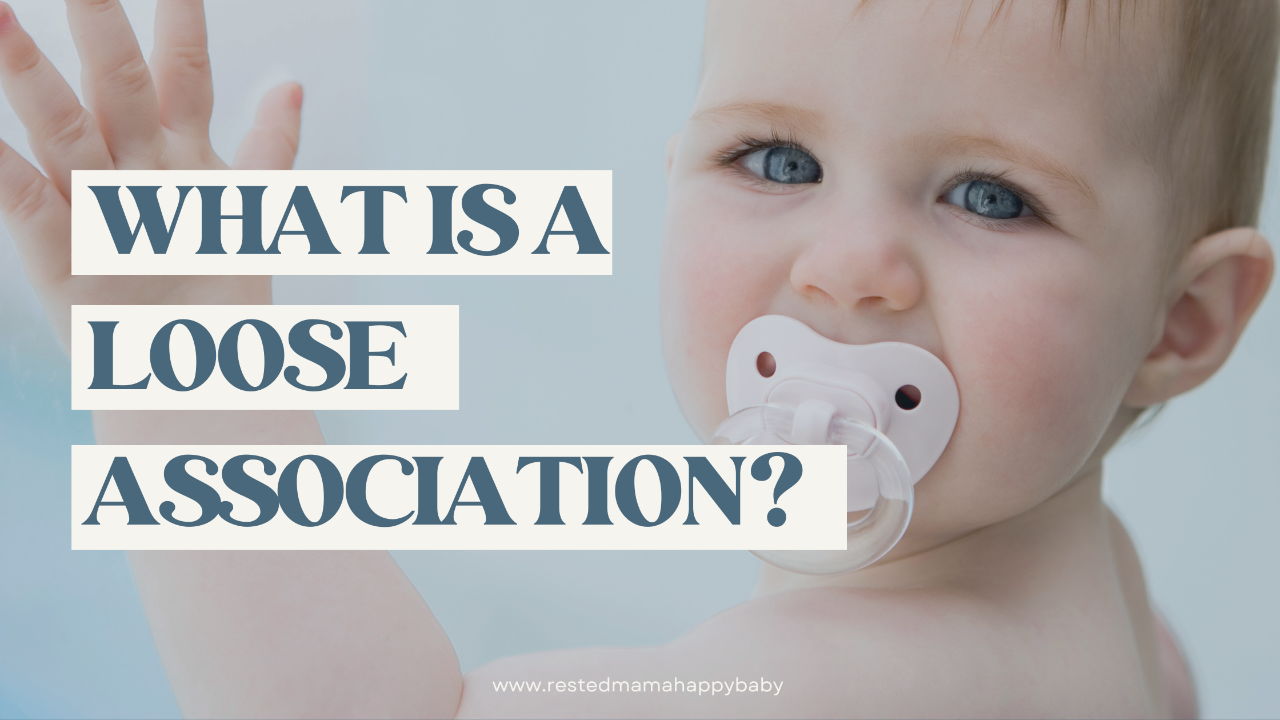What Is a Loose Association?
Sep 06, 2023
As a parent, few things are as precious as your child's sleep. Those peaceful hours of slumber offer both you and your little one a chance to rest, rejuvenate, and recharge. However, many parents find themselves facing sleep challenges with their babies and young children. One common culprit behind these sleep struggles is "loose sleep associations." In this comprehensive guide, we'll delve into the world of sleep associations, explore what loose associations are, provide examples, and offer evidence-backed insights into how they can impact your child's sleep. By the end, you'll have a better understanding of why addressing loose sleep associations is crucial for both you and your child.
What Are Sleep Associations?
Sleep associations are the cues or conditions that a child associates with falling asleep. These associations can be either "tight" or "loose." Tight sleep associations are strong, consistent cues that help a child initiate and maintain sleep. Examples include feeding completely to sleep, or when a child is rocked to sleep - even co-sleeping!
On the other hand, loose sleep associations are less reliable or consistent cues that may only help a child get drowsy, but not necessarily completely to sleep. They can be problematic because it does still become a less obvious sleep prop that isn't quite helping a child fall asleep independently.
Examples of Loose Sleep Associations
Feeding to Sleep: One of the most common loose sleep associations is feeding a child to sleep. When a baby associates nursing or bottle-feeding with falling asleep, they may require the same intervention when they wake up during the night or during naptime.
Rocking or Swinging: Rocking a baby to sleep can create a loose sleep association. If a child relies on being rocked to sleep, they may struggle to fall asleep when this condition is not met. It may even seem like your child is "awake" when you lay them down, but they are just drowsy enough that they still associate it to sleep.
Pacifier Dependency: While pacifiers can provide comfort, they can also become a loose sleep association if a child can't fall asleep without it. Waking up to replace a lost pacifier can disrupt sleep for both the child and the parent.
Parental Presence: If a child needs a parent to be present while they fall asleep, such as holding their hand or lying beside them, this creates a loose association. The child may wake during the night and require the same intervention to fall back asleep.
The Impact of Loose Sleep Associations
Loose sleep associations can have a significant impact on a child's sleep patterns and quality. Here's how they can affect your child's sleep:
Frequent Night Wakings: Children with loose sleep associations may wake up multiple times during the night because they cannot fall back asleep independently. This results in disrupted sleep for both the child and parents.
Short Naps: Loose sleep associations can lead to shorter and less restorative naps. When a child relies on a specific condition to fall asleep, they may wake up prematurely between sleep cycles.
Difficulty Initiating Sleep: Children with loose sleep associations may struggle to initiate sleep without the presence or intervention of a parent or caregiver. Bedtime routines can become prolonged and challenging.
Sleep Dependency: Loose associations create dependency on external factors for falling asleep. Children may become reliant on being fed, rocked, or comforted to sleep, making it difficult for them to self-soothe.
Inconsistent Sleep Patterns: Loose sleep associations result in inconsistent sleep schedules, making it challenging for parents to establish a reliable bedtime routine.
Exhaustion for Parents: Constantly tending to a child's sleep associations can lead to exhaustion and frustration for parents, impacting their own sleep and well-being.
Reduced Sleep Quality: Loose sleep associations can reduce the overall sleep quality for children, affecting their mood, behavior, and development.
Addressing Loose Sleep Associations
Addressing loose sleep associations is essential for both your child's sleep and your own well-being. It's important to create consistent and healthy sleep associations that allow your child to fall asleep independently and self-soothe when they wake during the night.
To learn more about how to address loose sleep associations, we invite you to watch our free webinar. Our evidence-based approach to sleep training, such as the Association Fading Method™, empowers parents to establish healthy sleep routines and create a peaceful and restful sleep environment for their children.
Understanding the concept of loose sleep associations and their impact on your child's sleep is a crucial step in addressing sleep challenges. By recognizing these associations and working toward healthier sleep routines, you can help your child sleep more soundly, enjoy longer naps, and experience fewer night wakings. Ultimately, this benefits both you and your child, creating a more peaceful and well-rested family environment.
"Learn more about how we work with families to help their babies sleep 10+ hours at night without Cry-it-out or Ferber. Join our free webinar!"

Want to learn more about our approach?
Join our FREE WEBINAR | How to Help Your Child Sleep 10+ Hours at Night without Leave and Check
Stay connected with free sleep tips and updates!
Join our mailing list to receive the latest news and updates, from live Q&As, exclusive offers, and free sleep tips. As a member, you will also receive a FREE copy of our Healthy Sleep Foundations Guide.
Don't worry, your information will not be shared.
We hate SPAM. We will never sell your information, for any reason.


